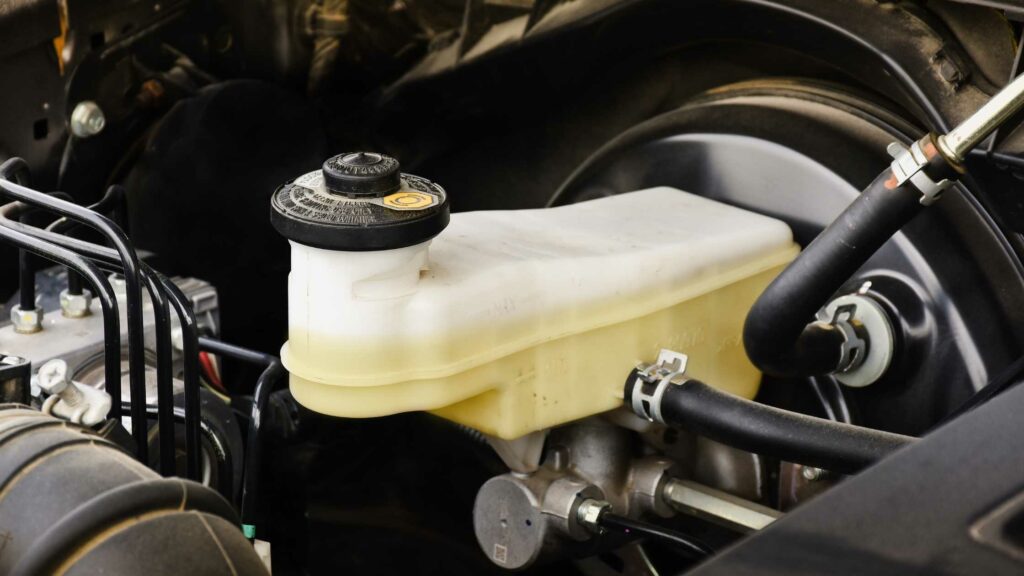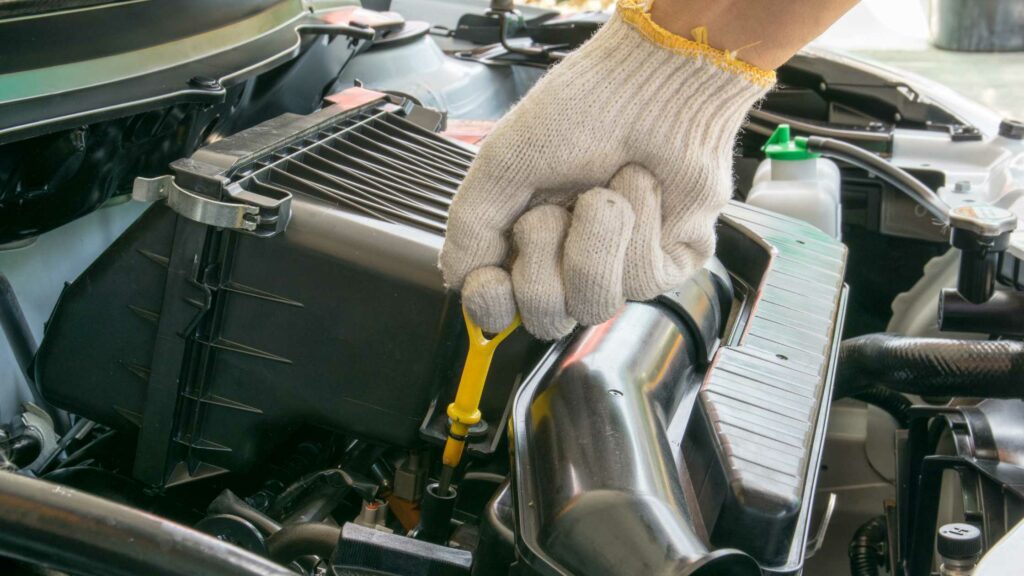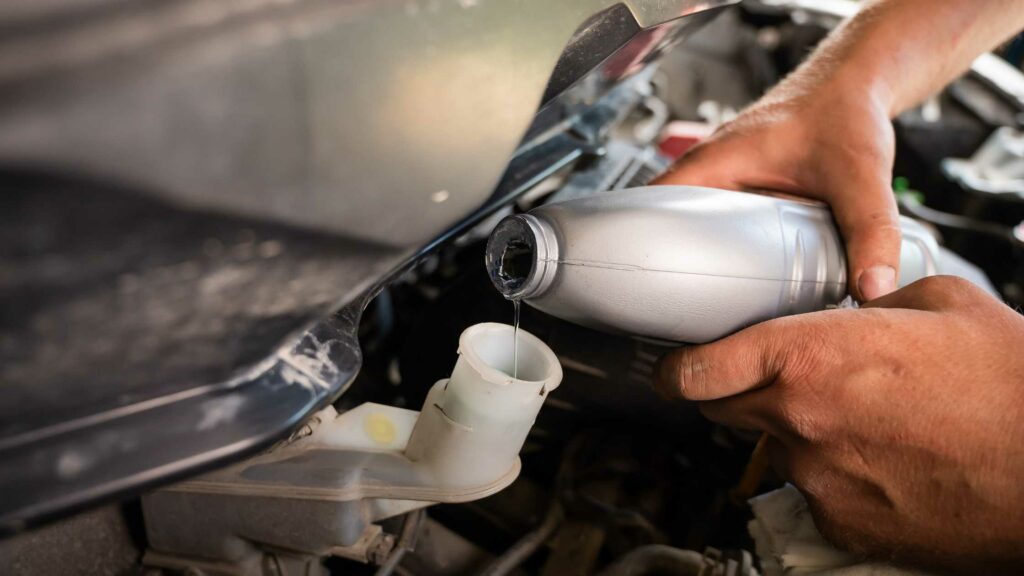Can you believe that, as per the National Highway Traffic Safety Administration (NHTSA), nearly 22% of vehicular accidents in the United States result from brake-related problems? You can prevent being part of this statistic by properly maintaining your vehicle’s braking system.
Brake fluid is a crucial component in a vehicle’s braking system. It transfers the force applied on the brake pedal to the vehicle’s brake calipers or wheel cylinders, allowing the vehicle to stop safely. Regularly checking the brake fluid level is essential for maintaining the overall condition and safety of the braking system
At HEART Auto Care, as expert mechanics, we understand the importance of brake fluid in your vehicle’s braking system. In this article, we will guide you on how to check your brake fluid level with seven simple steps.
- Park Your Car on a Level Surface
- Open the Hood of Your Car
- Locate the Brake Fluid Reservoir
- Check the Brake Fluid Level
- Determine If the Brake Fluid Needs to Be Topped Off
- Top Off the Brake Fluid If Necessary
- Close the Hood of Your Car
By following these steps, car owners can ensure their vehicle’s braking system remains in optimal condition and prevent potential accidents caused by low or contaminated brake fluid.
How to Check Brake Fluid Level
Maintaining the proper brake fluid level is crucial for the safety and performance of your car’s braking system. By following these straightforward steps, you’ll be able to ensure your brakes are functioning optimally, preventing potential accidents and costly repairs. So, let’s dive into the process and learn how to check your brake fluid level with ease and confidence.
Step 1: Park Your Car on a Level Surface

Before checking your brake fluid level, it’s essential to park your car on a level surface. This ensures an accurate reading of the fluid level in the reservoir. Checking brake fluid on an uneven surface may lead to incorrect readings, potentially causing you to overfill or underfill the reservoir. To find a level surface, look for a flat parking lot or garage floor.
Step 2: Open the Hood of Your Car

To safely open the hood of your car, turn off the engine and engage the parking brake. Locate the hood release lever inside the vehicle, usually near the driver’s side door or under the dashboard. Pull the lever to release the hood latch. Then, go to the front of the car, find the secondary hood release latch under the hood, and lift the hood.
The brake fluid reservoir is typically located near the back of the engine compartment, close to the firewall separating the engine from the passenger compartment. It is usually made of translucent plastic with markings indicating the minimum and maximum fluid levels. In different types of cars, the reservoir shape and location may vary slightly.
Step 3: Locate the Brake Fluid Reservoir

Once you have the hood open, locate the brake fluid reservoir in your car. As mentioned earlier, it is typically near the back of the engine compartment, close to the firewall. The reservoir is usually made of translucent plastic with markings indicating the minimum and maximum fluid levels. In different types of cars, the reservoir shape and location may vary slightly. Consult your owner’s manual for specific information about your vehicle.
By following these initial steps, you’ll be well-prepared to check your brake fluid level and ensure the proper functioning of your vehicle’s braking system. Remember to consult your owner’s manual for specific recommendations regarding your vehicle’s brake fluid reservoir location and maintenance guidelines.
Step 4: Check the Brake Fluid Level

At HEART Auto Care, we recommend checking the brake fluid level by looking at the exterior of the reservoir. The translucent plastic reservoir will have markings indicating the minimum and maximum fluid levels. To check the brake fluid level, ensure that the fluid is between these two lines.
If you’re having difficulty interpreting the brake fluid level markings, consult your owner’s manual for guidance. The manual will have specific information on how to read the markings in your particular vehicle.
Step 5: Determine If the Brake Fluid Needs to Be Topped Off

To determine if the brake fluid level is too low, check if the fluid is below the minimum line on the reservoir. Driving with low brake fluid can be dangerous, as it may result in reduced braking performance and increased stopping distances. This can lead to potential accidents and costly repairs.
If you find that the brake fluid is below the minimum line, it’s essential to top it off. However, if the fluid level is within the acceptable range, no action is required. Always consult your owner’s manual for the recommended brake fluid type and specifications for your specific vehicle.
Step 6: Top Off the Brake Fluid If Necessary

At HEART Auto Care, we recommend topping off the brake fluid safely to ensure optimal braking performance. To do this, first, clean the area around the reservoir cap to prevent any contaminants from entering the system. Remove the cap and use a clean funnel to pour the recommended brake fluid into the reservoir, being careful not to overfill it.
Always consult your owner’s manual for the specific type of brake fluid that should be used in your vehicle. Using the wrong type of brake fluid can lead to reduced braking performance or damage to the braking system.
When adding brake fluid, fill the reservoir until the fluid reaches the maximum line. Do not overfill, as this may cause issues with the braking system.
Step 7: Close the Hood of Your Car

Once you have checked and topped off the brake fluid level, it’s time to close the hood of your car. To do this safely, gently lower the hood and ensure it aligns correctly with the body of the vehicle. Press down on the hood until you hear the latch click, indicating that it is securely closed.
It’s essential to check your brake fluid regularly, as low or contaminated brake fluid can result in reduced braking performance and increased stopping distances. By following these steps and maintaining the proper brake fluid level, you can ensure the safety and reliability of your vehicle’s braking system.
Remember, at HEART Auto Care, our goal is to help you keep your vehicle running smoothly and safely. Stay vigilant with your brake fluid maintenance, and don’t hesitate to reach out if you need assistance or have any concerns about your car’s braking system.
Conclusion: How to Check Brake Fluid Level
In summary, we want to ensure that car owners are well-equipped with the knowledge on how to check brake fluid levels in their vehicles. To review, here are the seven steps to follow:
- Park your car on a level surface
- Open the hood of your car
- Locate the brake fluid reservoir
- Check the brake fluid level
- Determine if the brake fluid needs to be topped off
- Top off the brake fluid if necessary
- Close the hood of your car
Regularly checking your brake fluid level is crucial for maintaining the performance of your car’s braking system. By following these seven practical steps, you can prevent potential accidents and costly repairs due to low or contaminated brake fluid.
As a responsible car owner, we encourage you to take action and check your brake fluid level today. If you encounter any issues with your brake system and need assistance, don’t hesitate to reach out to a professional mechanic or visit us at HEART Auto Care. We’re here to help. Let’s keep your vehicle running smoothly for you and your family’s safety.






